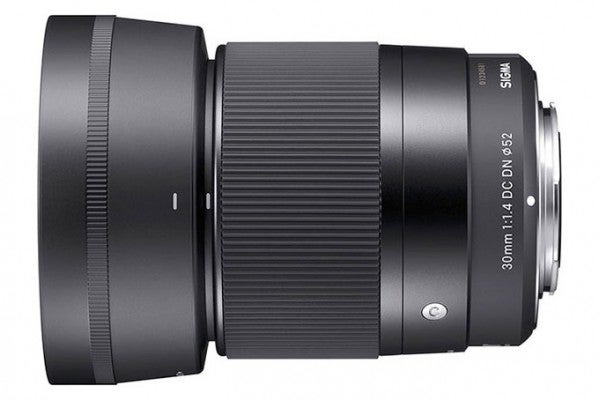Should the new Sigma 30mm f/1.4 DC DN standard lens be top of the list for Micro Four Thirds and Sony E-mount users? Richard Sibley finds out.
Sigma 30mm f/1.4 DC DN review
This rise in popularity has led most manufacturers to revisit their 50mm (and 50mm-equivalent) lenses and give them updates that include modern lens coatings and improved performance. However, Sigma’s latest 30mm f/1.4 DC DN | C lens is an entirely new optic purpose-designed for mirrorless cameras, which comes in both Sony E and Micro Four Thirds mounts. Used on an MFT camera, it has a 60mm equivalent field of view, while it comes in at around 45mm equivalent when used on a Sony E-mount camera with an APS-C-sized sensor.
Sigma 30mm f/1.4 DC DN – Features
Without having to create an image circle large enough to cover a 35mm full-frame sensor, the Sigma 30mm is relatively small and light, especially when you consider that it has an f/1.4 aperture. However, it’s physically somewhat long. Optically, the lens is constructed of nine elements in seven groups, with the two rear elements being aspherical. These should help provide edge-to-edge sharpness, as well as keep chromatic aberrations to a minimum, if they are visible at all. To reduce flare and ghosting, the lens features Sigma’s Super Multi-Layer coating.

The 30mm is a good lens for mid-length portraits
There obviously isn’t much point in an f/1.4 aperture if you have horrible hexagonal bokeh, so sensibly Sigma has employed nine rounded aperture blades to ensure that when the lens is stopped down to f/1.8 and beyond, the out-of-focus areas show nice circular specular highlights and smooth transitions.
The lens is completely electronically controlled. There is no aperture ring and the focus ring is a fly-by-wire electronic affair. To make focusing fast and smooth, the lens employs a stepping motor that is both quick and quiet. Sigma promotes this as being especially useful when shooting video. Added to this, the AF system is fully compatible with Sony’s Fast Hybrid AF system.
The body of the lens itself feels cold to touch, and appears to be largely made of metal. However, Sigma states that some parts of the barrel, and the lens aperture, are made of Thermo Stable Composite (TSC). This material is ‘highly elastic’ and ‘exhibits minimal deformation’, according to the information in the manufacturer’s press material. The result is that these parts should cope better with wear and tear, and be less prone to the small gaps and shifts over time that can be caused by fluctuations in temperature.
The only other point to note about the construction of the lens is the brass mount that has been coated for extra durability. Rather usefully, Sigma will actually swap lens mounts over, so if you switch from Micro Four Thirds to Sony E mount, or vice versa, you can send the lens to Sigma, and the company will swap the mount. Based on its prices for mirrorless cameras, the conversion should cost around £85, which is far cheaper than buying a new lens.





